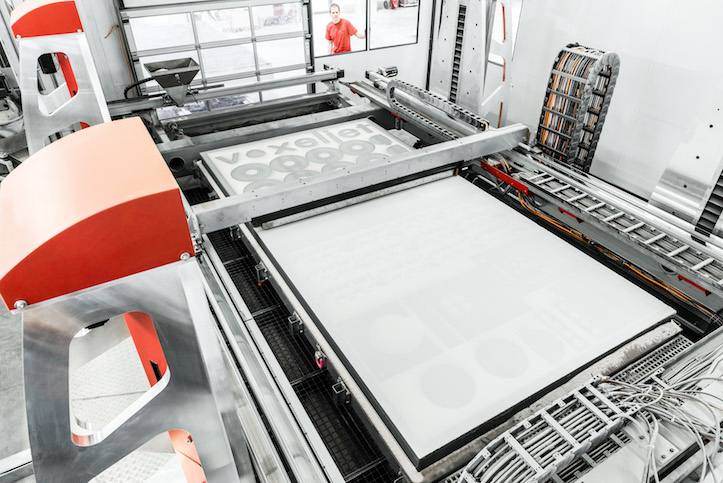Reduce kerb weight to increase range: With this goal, nine partners from research and industry are working on the ultra-light body structure of an electric van. As part of the consortium, voxeljet AG (NASDAQ:VJET) is supplying sand casting moulds and cores for large-format structural components of the body.
With the VX4000, the world's largest 3D printing system for sand moulds, voxeljet can produce components with highly complex, weight-saving geometries and a size of over two metres in one piece. Compared to conventional die casting, where many individual parts have to be cast and assembled, sand mould casting is much more cost-effective and faster for product development, as there is no need for costly toolmaking.
As part of the research project "ULAS-E-VAN" ("UltraLeicht AufbauStruktur eines Elektrischen VANs" - UltraLightweight Body Structure of an Electric Van), nine partners are developing lightweight solutions for the body structure and a modular battery carrier system of battery-electric light commercial vehicles (Nfz, class N1 - Ford Transit - BEV). Ford is coordinating the research project with a total volume of 5.8 million euros, funded by the Federal Ministry of Economics and Climate Protection (BMWK). The project partners are Altair Engineering GmbH, BENTLER Automobiltechnik GmbH, C-TEC GmbH, Ford-Werke GmbH, Franken Guss GmbH + Co. KG, MORPHOTEC, RWTH Aachen University, Chair and Institute for Structural Mechanics and Lightweight Construction (SLA), RWTH Aachen University, Institute for Automotive Engineering (ika), and voxeljet AG.
If a light commercial vehicle is equipped with an e-drive, the unladen weight increases due to the high battery weight and the possible payload shrinks. To counteract this, it is imperative to reduce the weight decisively through lightweight construction measures, especially in the case of battery-powered delivery vehicles. Lightweight construction makes it possible to increase the range, but also to reduce the battery size, the secondary weight and thus the battery costs if the range remains unchanged. However, in the targeted sector of e-commercial vehicles, the need for cost-effective lightweight construction is even more acute due to the high cost sensitivity of the potential customer base and the relatively low unit numbers.
This is where the project comes in. The consortium aims to develop ultra-lightweight construction solutions for the body and superstructure of such battery-electric light commercial vehicles using modern CAE methods such as "simulation-driven design" and innovative manufacturing methods. In addition to a special 3D printing process - 3D sand mould printing - for the production of moulds for the iron casting process, large-scale structural plastic parts are also used.
The design of the superstructure is to be based on a frame-stringer construction, thus transferring the construction method proven in aircraft construction to light commercial vehicle construction with higher production figures per year. The frames are to be designed as one-piece and bionically optimised as possible. The outer skin is formed by prefabricated plastic panels that are connected to the load-bearing structure. A load-bearing, ultra-light, scalable and modular battery carrier system is to be integrated in the underbody, which will functionally support the body structure in terms of rigidity, fatigue strength and crash. The technologies used are expected to achieve a weight saving in the order of up to 150 kg on a total vehicle level, thus enabling an increased range or payload.
